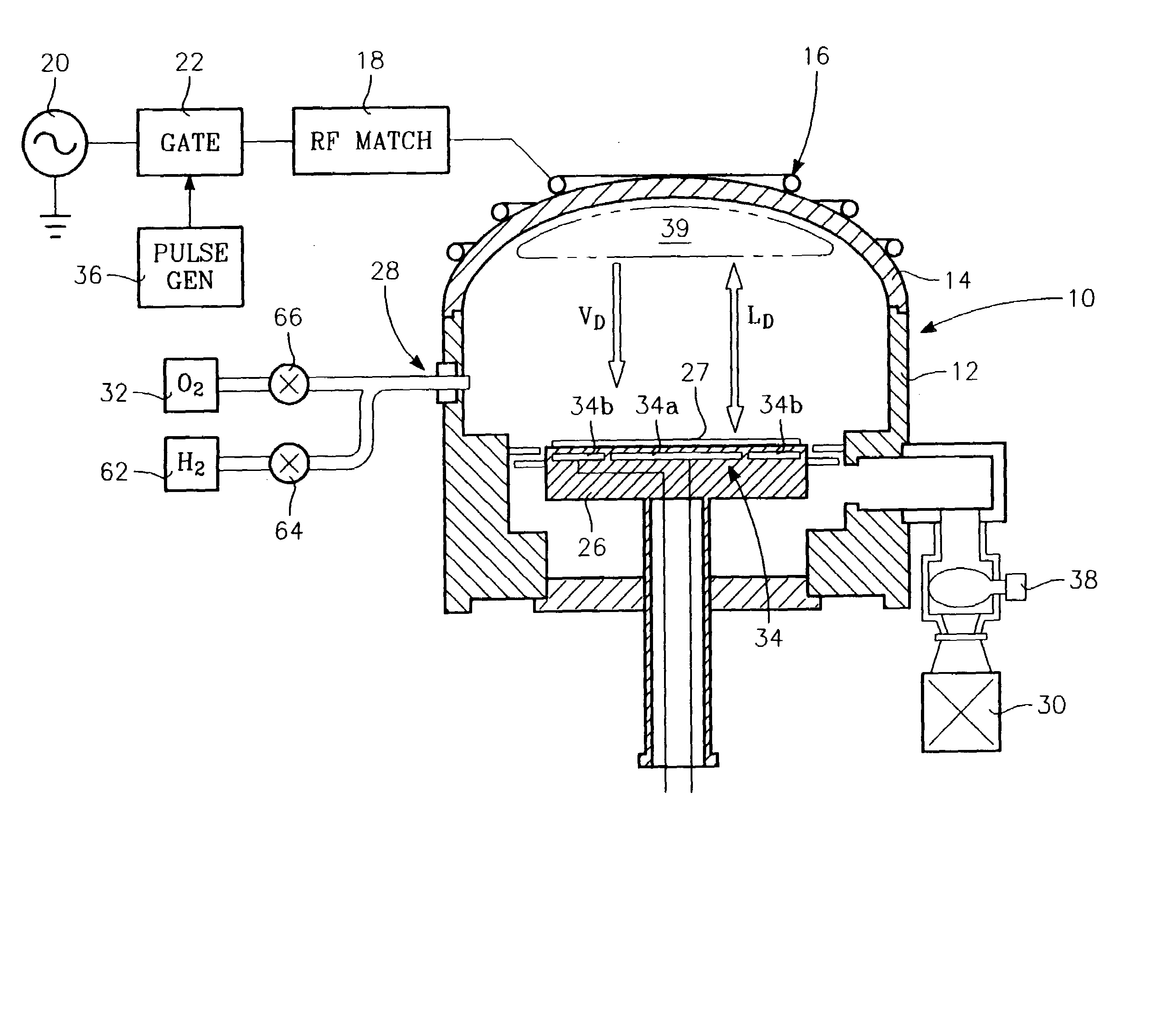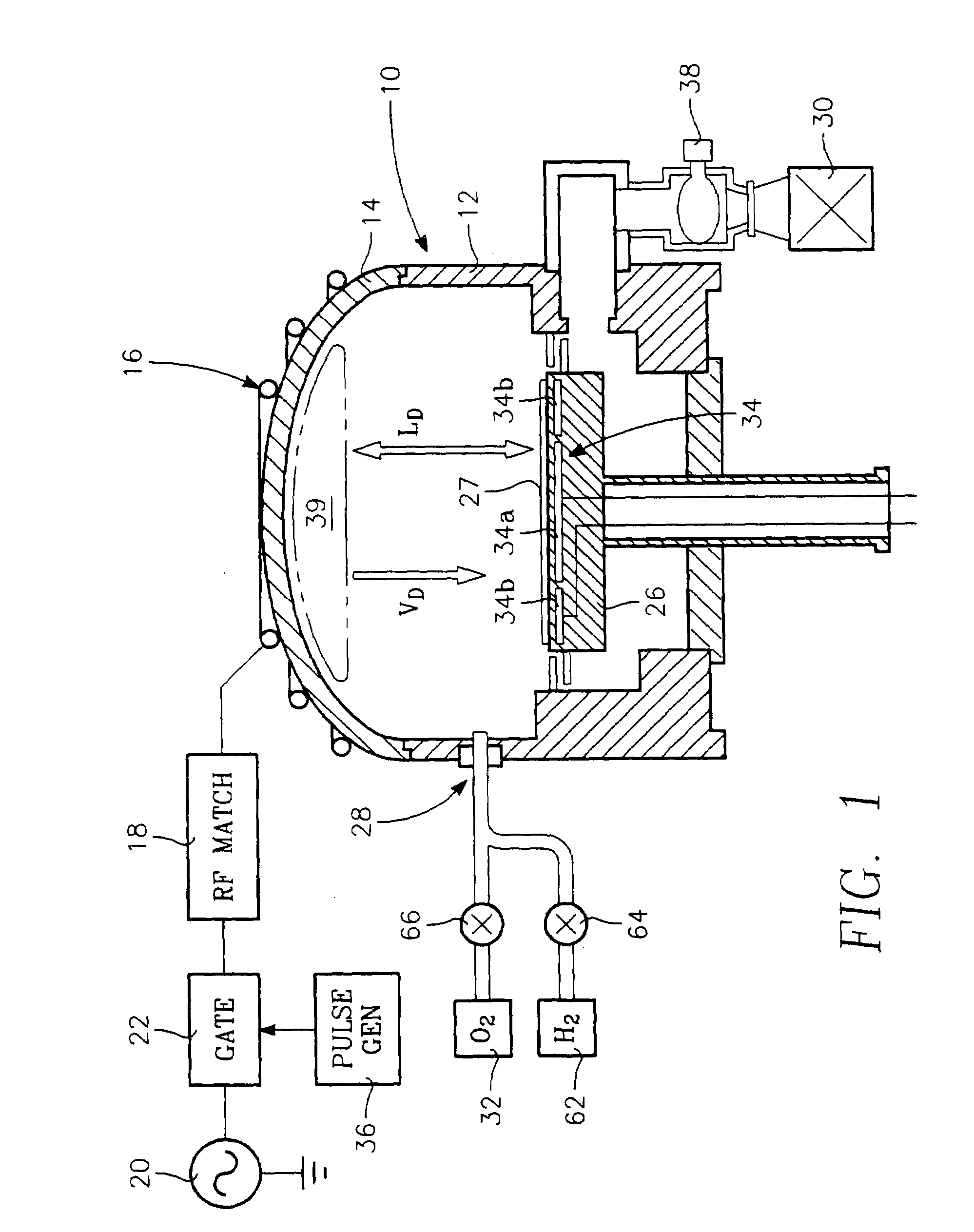Selective plasma re-oxidation process using pulsed RF source power
a reoxidation process and plasma technology, applied in the direction of electrical equipment, basic electric elements, electric discharge tubes, etc., can solve the problems of gate electrode leakage, thermal oxide growth process, etc., to limit the vacuum pressure and limit the formation of contamination-induced defects
- Summary
- Abstract
- Description
- Claims
- Application Information
AI Technical Summary
Benefits of technology
Problems solved by technology
Method used
Image
Examples
Embodiment Construction
[0026]FIG. 1 illustrates a plasma reactor for carrying out the gate oxide formation process of the present invention. The reactor has an inductively coupled plasma source power applicator driven by a pulsed RF power generator. The reactor includes a chamber 10 having a cylindrical side wall 12 and a ceiling 14 which may be either dome-shaped (as shown in the drawing) or flat. The plasma source power applicator consists of a coil antenna 16 over the ceiling 14 coupled through an impedance match network 18 to an RF power source consisting of an RF power generator 20 and a gate 22 at the output of the generator 20 controlled by a pulse signal having a selected duty cycle. The reactor further includes a wafer support pedestal 26, which may be an electrostatic chuck, for holding a semiconductor wafer 27, a gas injection system 28 and a vacuum pump 30 coupled to the interior of the chamber. The gas injection system 28 is supplied by a process gas source, such as an oxygen container 32. Th...
PUM
 Login to View More
Login to View More Abstract
Description
Claims
Application Information
 Login to View More
Login to View More - R&D
- Intellectual Property
- Life Sciences
- Materials
- Tech Scout
- Unparalleled Data Quality
- Higher Quality Content
- 60% Fewer Hallucinations
Browse by: Latest US Patents, China's latest patents, Technical Efficacy Thesaurus, Application Domain, Technology Topic, Popular Technical Reports.
© 2025 PatSnap. All rights reserved.Legal|Privacy policy|Modern Slavery Act Transparency Statement|Sitemap|About US| Contact US: help@patsnap.com



